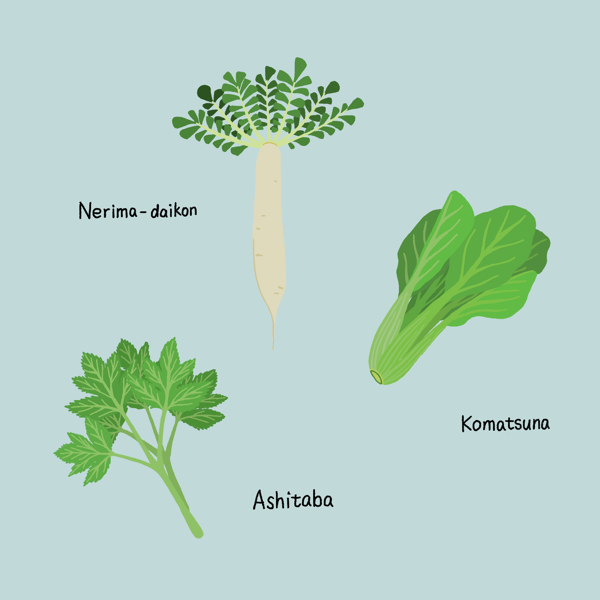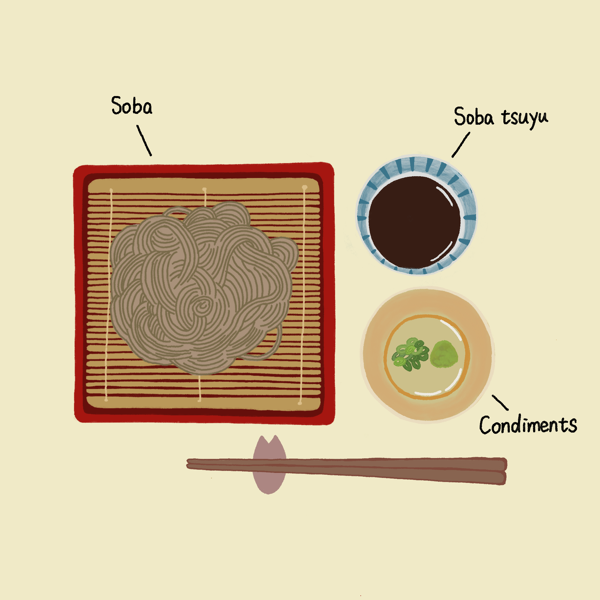Tokyo Life
"Our Tokyo" Food in Tokyo
Tokyo Vegetables

Tokyo's agricultural land accounts for only about 3.4% of its total surface area (2015), but a variety of vegetables are grown there. Typical examples are Nerima Daikon, Komatsuna, and ashitaba. Recently, efforts have been made to promote traditional vegetables that have been produced since the Edo period as "Edo-Tokyo Vegetables," to an even wider audience.
- Komatsuna
- (Japanese mustard spinach): It is said to be particularly high in calcium, among vegetables. It is the most widely grown vegetable in Tokyo.
- Nerima Daikon
- It is one of the longest and largest varieties of Japanese radish, measuring 60 to 80 centimeters.
- Ashitaba (Angelica keiskei)
- The origin of its name is that it is said to be "so vigorous that even if you pluck its leaves, it will produce new leaves tomorrow."
How to Eat Soba Noodles

Since the time when Tokyo was called Edo, there have been many soba eateries. Even today, there are many soba places in Tokyo. Let's take a look at how to eat morisoba (cold soba).
- Add condiments (green onion and wasabi) to soba tsuyu (sauce) in a dipping cup. (Add a little at a time, at first.)
- Take a mouthful of soba noodles with chopsticks, and dip it in the soba-tsuyu cup (soba-choko). Please hold the cup in your hand while eating.
- You may eat soba while making a noise, as if you were slurping the noodles. By doing so, you may enjoy their aroma.
- At the end of the process, the soba-yu (hot water used to boil the soba) is served. Add it to the leftover soba-tsuyu, and drink it.
Ningyo-Yaki

Ningyo-Yaki is one of the most popular Japanese confections in Tokyo. It is said to have originated in the Nihonbashi Ningyocho area of Chuo-ku, and was named Ningyo-Yaki to reflect its origins. The sponge cake dough may be filled with sweet bean paste, or may be left as is. Ningyo-Yaki are not only made in the shape of faces, but also in the shape of Asakusa's Kaminarimon lantern, five-story pagodas, and animals such as tanuki (the Japanese racoon dog). Because of its cute shapes, many people purchase them as souvenirs.
